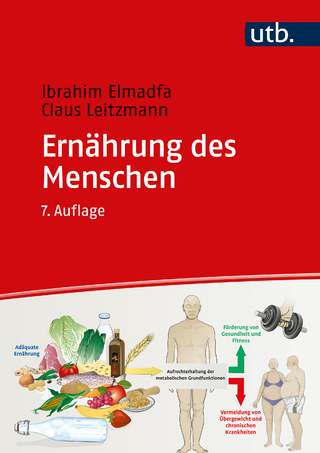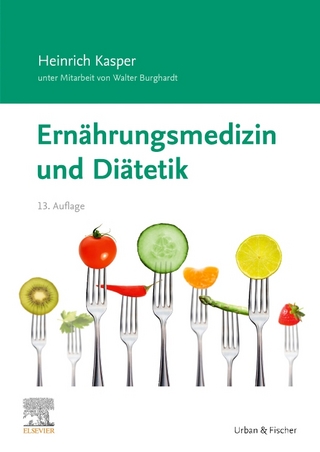
Weighing the Options
National Academies Press (Verlag)
978-0-309-05131-6 (ISBN)
- Keine Verlagsinformationen verfügbar
- Artikel merken
Nearly one out of every three adults in America is obese and tens of millions of people in the United States are dieting at any one time. This has resulted in a weight-loss industry worth billions of dollars a year and growing. What are the long-term results of weight-loss programs? How can people sort through the many programs available and select one that is right for them? Weighing the Options strives to answer these questions. Despite widespread public concern about weight, few studies have examined the long-term results of weight-loss programs. One reason that evaluating obesity management is difficult is that no other treatment depends so much on an individual's own initiative and state of mind.
Now, a distinguished group of experts assembled by the Institute of Medicine addresses this compelling issue. Weighing the Options presents criteria for evaluating treatment programs for obesity and explores what these criteria mean?to health care providers, program designers, researchers, and even overweight people seeking help.
In presenting its criteria the authors offer a wealth of information about weight loss: how obesity is on the rise, what types of weight-loss programs are available, how to define obesity, how well we maintain weight loss, and what approaches and practices appear to be most successful.
Information about weight-loss programs?their clients, staff qualifications, services, and success rates?necessary to make wise program choices is discussed in detail.
The book examines how client demographics and characteristics?including health status, knowledge of weight-loss issues, and attitude toward weight and body image?affect which programs clients choose, how successful they are likely to be with their choices, and what this means for outcome measurement. Short- and long-term safety consequences of weight loss are discussed as well as clinical assessment of individual patients.
The authors document the health risks of being overweight, summarizing data indicating that even a small weight loss reduces the risk of disease and depression and increases self-esteem. At the same time, weight loss has been associated with some poor outcomes, and the book discusses the implications for program evaluation.
Prevention can be even more important than treatment. In Weighing the Options, programs for population groups, efforts targeted to specific groups at high risk for obesity, and prevention of further weight gain in obese individuals get special attention.
This book provides detailed guidance on how the weight-loss industry can improve its programs to help people be more successful at long-term weight loss. And it provides consumers with tips on selecting a program that will improve their chances of permanently losing excess weight.
Table of Contents
Front Matter
Summary
1 Introduction and Background
2 The Nature and Problem of Obesity
3 Programs for and Approaches to Treating Obesity
4 Weighing the Options
5 Criterion 1: The Match Between Program and Consumer
6 Criterion 2: The Soundness and Safety of the Program
7 Criterion 3: Outcomes of the Program
8 Weighing the Options: Application of Committee's Criteria
9 Prevention of Obesity
10 Research and Policy Recommendations
Appendix A: Assessment Instruments of Relevance to Obesity
Treatment
Appendix B: The Diet Readiness Test and the General Well-Being
Schedule
Appendix C: Pediatric Obesity
Appendix D: Accrediting Providers of Weight-Management Services
Appendix E: Biographies of Committee Members
Bibliography
Index
Paul R. Thomas, Editor; Committee to Develop Criteria for Evaluating the Outcomes of Approaches to Prevent and Treat Obesity, Institute of Medicine
1 Front Matter; 2 Summary; 3 1 Introduction and Background; 4 2 The Nature and Problem of Obesity; 5 3 Programs for and Approaches to Treating Obesity; 6 4 Weighing the Options; 7 5 Criterion 1: The Match Between Program and Consumer; 8 6 Criterion 2: The Soundness and Safety of the Program; 9 7 Criterion 3: Outcomes of the Program; 10 8 Weighing the Options: Application of Committee's Criteria; 11 9 Prevention of Obesity; 12 10 Research and Policy Recommendations; 13 Appendix A: Assessment Instruments of Relevance to Obesity Treatment; 14 Appendix B: The Diet Readiness Test and the General Well-Being Schedule; 15 Appendix C: Pediatric Obesity; 16 Appendix D: Accrediting Providers of Weight-Management Services; 17 Appendix E: Biographies of Committee Members; 18 Bibliography; 19 Index
| Erscheint lt. Verlag | 1.4.1995 |
|---|---|
| Verlagsort | Washington |
| Sprache | englisch |
| Maße | 152 x 229 mm |
| Themenwelt | Medizin / Pharmazie ► Gesundheitsfachberufe ► Diätassistenz / Ernährungsberatung |
| ISBN-10 | 0-309-05131-2 / 0309051312 |
| ISBN-13 | 978-0-309-05131-6 / 9780309051316 |
| Zustand | Neuware |
| Haben Sie eine Frage zum Produkt? |
aus dem Bereich


